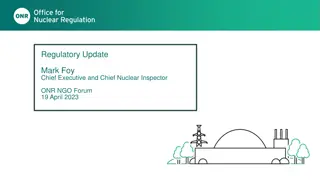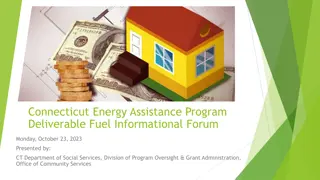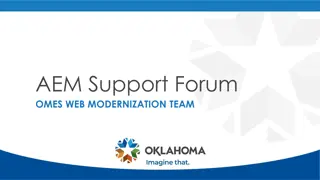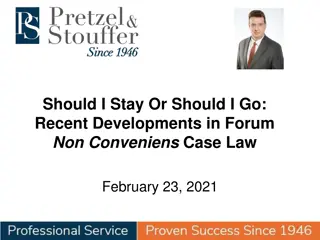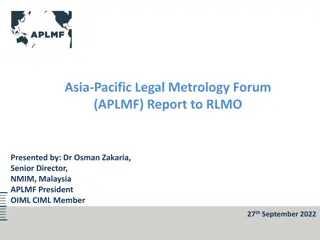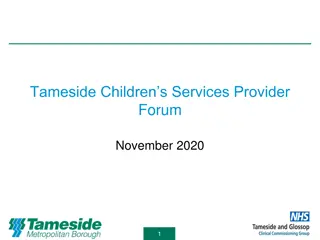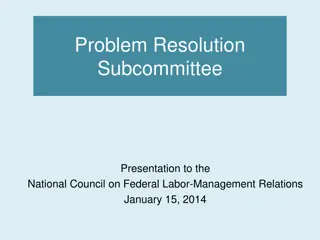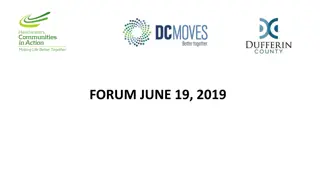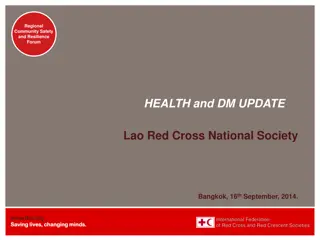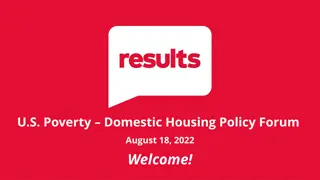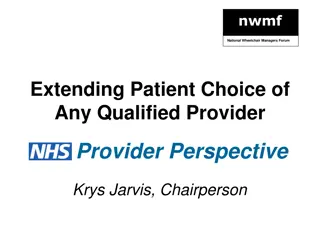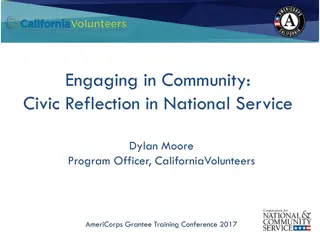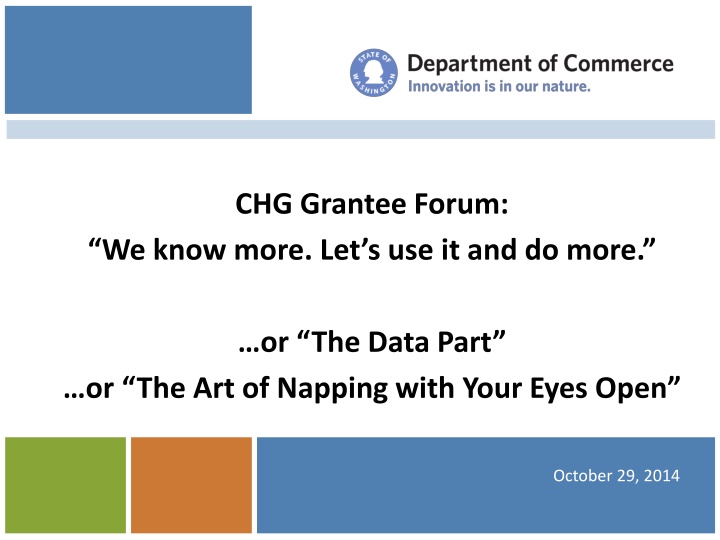
Empowering Communities: Homelessness Data Insights
Explore key insights from a forum discussing achievements in 2013 related to housing assistance programs. Learn about household demographics, program effectiveness, cost analysis, and the correlation between stay duration and housing success rates.
Uploaded on | 0 Views
Download Presentation

Please find below an Image/Link to download the presentation.
The content on the website is provided AS IS for your information and personal use only. It may not be sold, licensed, or shared on other websites without obtaining consent from the author. If you encounter any issues during the download, it is possible that the publisher has removed the file from their server.
You are allowed to download the files provided on this website for personal or commercial use, subject to the condition that they are used lawfully. All files are the property of their respective owners.
The content on the website is provided AS IS for your information and personal use only. It may not be sold, licensed, or shared on other websites without obtaining consent from the author.
E N D
Presentation Transcript
CHG Grantee Forum: We know more. Let s use it and do more. or The Data Part or The Art of Napping with Your Eyes Open October 29, 2014
Accomplishments in Calendar Year 2013 With CHG & EFH (not HEN): -26,827 households -39,587 people in households With all funding: -50,916 households -72,237 people in households 44% in families with children 59% of those are single parents 54% adults only 2% children only 40% in families with children 58% of those are single parents 58% adults only 2% children only 36% Disabled 4% Veterans 1% Unaccompanied Youth 6% Young Adults (18-24) 35% Disabled 7% Veterans 1% Unaccompanied Youth 6% Young Adults (18-24)
Households Entered by Program Type 2011 All 6% 10% 51% 33% 2012 All 5% 8% 50% 37% 2013 All 5% 8% 50% 37% 2013 CHG 5% 10% 53% 32% 0% 20% 40% 60% 80% 100% PH/PSH TH ES HPRR
Average Rate of Exit to Stable Housing Prevention or Rapid Re-Housing 77% Emergency Shelter 38% Transitional Housing 58% 0% 10% 20% 30% 40% 50% 60% 70% 80% 90% Rate of Stable Exits
Average Days of Service at Exit Prevention or Rapid Re-Housing 170 Emergency Shelter 43 Transitional Housing 211 0 50 100 150 200 250 Avg Days of Service
Average Cost per Day Prevention or Rapid Re-Housing $18.27 Emergency Shelter $28.28 Transitional Housing $42.08 $0.00 $50.00 Avg Cost per Day
Average Cost per HH Exit Prevention or Rapid Re-Housing $3,106.00 Emergency Shelter $1,216.00 Transitional Housing $8,879.00 $- $10,000.00 Total Cost per HH Exit
Longer stays = better outcomes? Our numbers show that the longer a family or individual stays in the shelter, the higher rates of exiting to stable housing they have, [redacted] said. ES % Successful TH % Successful 84% 78% 60% 57% 51% 44% 41% 26% One Day to Three Months Four to Six Months Six to Twelve Months Twelve or More Months
Longer stays = better outcomes? Or ES % Successful TH % Successful RRH % Successful 84% 72% 78% 78% 77% 71% 60% 57% 51% 44% 41% 26% One Day to Three Months Four to Six Months Six to Twelve Months Twelve or More Months
Are Households Returning to Homelessness after Exiting to Permanent Housing? Returned 7% Looking back to your exits from 2011 and 2012 Haven't returned 93%
Are Households Entering with Past PH Exits from the Homeless System? Returning from past PH exit 4% Checking out the history of your current entries Returning from non-PH 14% Not returning 82%
What if What if all the EFH households were transitionally housed instead of rapidly re-housed? HH Served Days of Service Cost per Day Cost per HH Total Cost 177 104 $18.27 $1,900 $336,314 Same Same $42.08 $4,376 $774,608 It could have cost the state $438,294 more to serve the same families. And less people would have permanent housing at the end of their subsidy.
What if What if you had entirely eliminated transitional housing by the start of 2013? HH Served Days of Service Cost per Day Cost per HH Total Cost 1,099 211 $42.08 $8,879 $9,757,889 Same 170 $18.27 $3,106 $3,413,384 Could we have saved nearly $6 million? Or spent the same but served more families and helped them get better outcomes?
What if What if we had spent our prevention dollars in January 2014 on housing unsheltered homeless people ? What would the PIT count have been instead? JAN 2014 Prevention Persons Entered in HMIS JAN 2014 PIT Unsheltered Persons Counted Reality 1811 6,289 What if 0 4,478 to 5,389
What else can you do? What else can we do? Transitional housing conversions? Reduced lengths of stay and returns? Less use of prevention; more use of rapid rehousing? Increased rates of stable housing? What if we progressively engaged you (much as we are asking you to do with your clients)? Do you know what help you need from the state to succeed? Do you have a sense of what succeed means to you? Do you think Commerce can stand back and let you go?
For further information or HMIS help Talia Scott (p.s. - her first name is not Scott ) 360-725-2989 Jennifer Garrett 360-725-5002 Maylee Stevenson 360-725-2984 Julie Montgomery 360-725-2963 Mary Schwartz 360-725-2982 Everyone s email is firstname.lastname@commerce.wa.gov
And now Here s Scott Talia to introduce our next guest
RJ Reynolds Company: Slow to change Founded in 1875 Research emerged in 1950s and 60s on dangers of smoking - national Made $124 million last year In 1998 (sixteen years ago! Same time HMIS started getting mentioned at federal level!) settled with 46 states; includes no less than $206 billion in ongoing medical costs for caring for smokers, and funding for action groups ( The Truth ) to curtail smoking, especially among youth 500,000 people die each year from smoking-related deaths 18% of adult Americans smoke (similar to RJ Reynolds work force) In October 2014: RJ Reynolds banned smoking in their offices in North Carolina.




